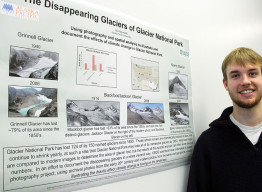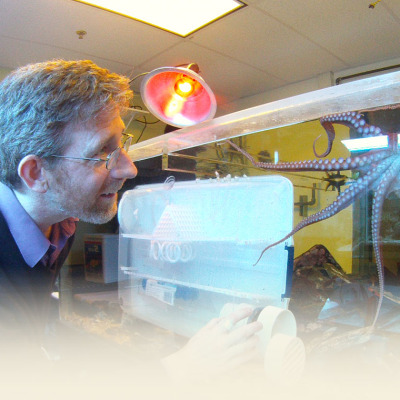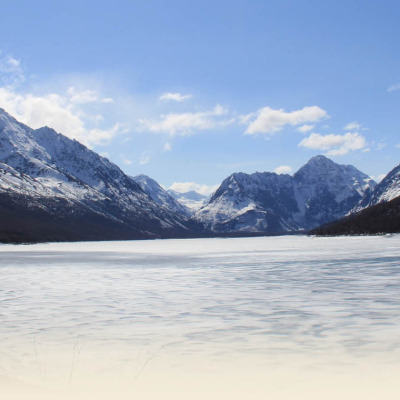

Alaska Pacific University Students Practice Professional Skills at Fall, 2014 Poster Session
By Jason Geck, Environmental Science Toward the close of every Fall and Spring semesters, right around the time of Senior Project Presentations, the Environmental Science Department of Alaska Pacific University…
Roman Dial Meditates on the Fate of the Planet
Global Chorus: 365 Voices on the Future of the Planet is an illustrated collection of 365 daily meditations soon to be released by Rocky Mountain Books. Each of the 365…
APU on the Web: Candela explains icefield study for LinkTV viewers
Glacier science undertaken by double-major Sal Candela is showcased in a short film that takes viewers to one of the world’s largest non-polar masses of snow and ice. Candela, ’15,…
University teams with tribe-based council to gather watershed data
Efforts to gain knowledge about the Kuskowkim River watershed is the object of a canoe trip that will take team leader Martin Leonard, ’02, from the foothills of Mount McKinley…
21st century conservation is Cornick’s focus for international gatherings, handbook
A symposium developed by Marine Biology Professor Leslie Cornick has gained the attention of international conferences and led to a book proposal. “Integrating Marine Mammal Conservation: 21st Century Challenges” was…
Daily News readers gain insight into University’s long-term study of giant Pacific octopus
Anchorage Daily News readers learned about the University’s pioneering research on the little-understood giant Pacific octopus and whether its lineage includes a new species. Following her visit to the 1,000-gallon…
Law seminar highlights Cornick’s research on Cook Inlet belugas
Associate Professor Leslie Cornick was among invited presenters at a continuing-education seminar for lawyers focusing on the Endangered Species Act in Alaska. Cornick is a regionally ranked expert in Cook…
APU dominates Wilderness Classic, shows its mettle as an Outside magazine Top 25 campus
Environmental science instructor Luc Mehl claimed first place in the Alaska Mountain Wilderness Classic, a bruising adventure race dominated this year by Alaska Pacific University. Five of seven finishers are…
APU’s climate change research attracts national interest
A team of APU students led by Earth Sciences Professor Michael G. Loso is featured in a report June 25 on National Public Radio. NPR focuses on Loso’s grant-funded study…
On the trail with the Glaciology and Glacier Travel Course
Students attending the May Block course Glaciology and Glacier Travel left Anchorage early this morning for Eklutna Lake. Today’s warm sun and clear skies provided spectacular views of the mountains. The…





